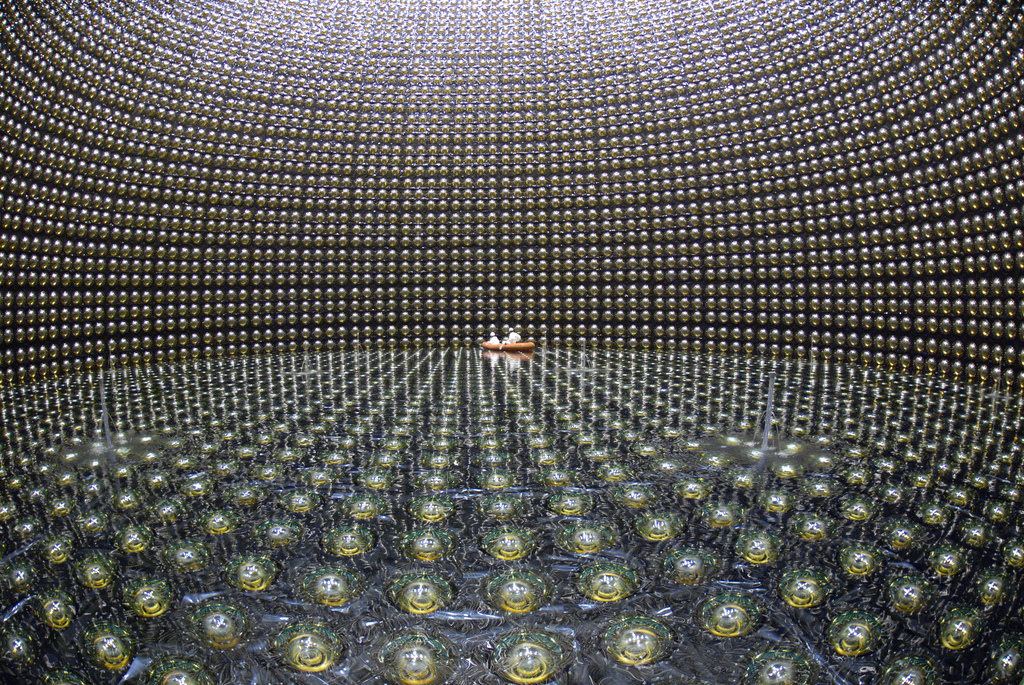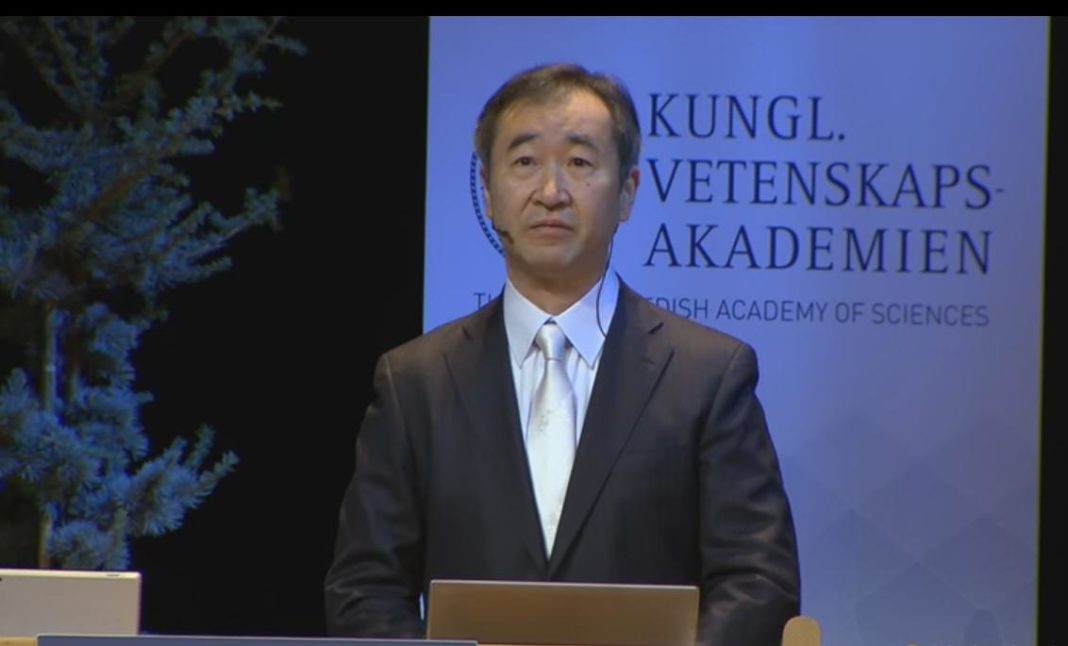According to physicist Takaaki Kajita (Higashimatsuyama, 1959), scientific research in Japan is going through difficult times, especially for young scientists. He argues that much remains to be solved in particle physics and, despite our great advances, not even at the end of the century will we reach a complete picture of the physical world.
The recipient of the 2015 Nobel Prize in Physics for discovering the mass of neutrinos talked with Ciencia del Sur at a time when the Japanese government is cutting funding to scientific research, putting several disciplines at risk. According to the UNESCO Institute of Statistics, Japan invests 3.3 percent of its GDP in research and development, with private firms being the main sources of funding.
Kajita began his studies at the University of Saitama and received a PhD from the University of Tokyo. He was the director of the Research Center for Cosmic Neutrinos (RCCN) at the Institute for Cosmic Ray Research (ICRR), which he now heads. He’s also a principal investigator at the Kavli Institute for the Physics and Mathematics of the Universe (IPMU) in Tokyo.
Kajita is the main figure behind the Super-Kamiokande (Super-K), a neutrino observatory located a kilometer underground in Gifu, Japan, that investigates solar and atmospheric neutrinos and detects the decay of protons and neutrinos from our galaxy’s supernovae.
The following interview has been edited for clarity.
-Neutrinos have become the «stars» of particle physics in recent years. You discovered that neutrinos undergo metamorphosis and have mass. Should the standard model be expanded?
The standard model of particle physics is still a very good model, explaining many
experimental results. It must be extended so that it includes the small neutrino masses.
-Why is it important to study neutrinos?
We think it is very important to study the neutrino properties related to the small masses.
-What do you tell those who says it is better to focus investment on health or elementary education rather than basic science or theoretical research?
The outcome from basic science enlarges the knowledge of humanity and is common to all people. In my opinion, this kind of activity is very important. Therefore, some resources should be used in basic science.

-What are your current research projects?
I am currently working on a project trying to observe gravitational
waves. However, as a director, it is not possible for me to concentrate on
research.
–Is it feasible to do research and also head the ICRR?
My time is allocated more on the director job.
-You made many contributions to science, especially in particle
physics. You won the Nishina Memorial Prize, the Panofsky Prize, the Nobel of Physics. But what do you think was your main contribution to knowledge?
I think my main contribution is the discovery of the neutrino mass.
-What is the state of Japanese science?
Science in Japan in general is in a difficult stage.
-Do you have less support?
The support from the government is shrinking. In particular, the situation is very bad for young scientists, because it is very difficult for them to get a permanent research job in Japan.
-What is your opinion on cutting funding for humanities or social sciences in Japan?
The budget cut in Japan is not only for humanities or social sciences, but for all basic research. Maybe the support is getting weaker in these fields than in the others. In any case, it’s very bad.
The Japanese government is trying to get the research results that can be used tomorrow, with the hopes that they might improve the economy. Unfortunately, science in Japan will become weak rather quickly with this kind of support strategy of the Japanese government.
-Has the Nobel Prize changed your life?
My life has changed since the Nobel Prize. I spend much more time talking to high school students, for instance.
-Will the 21st century see a complete standard model? What does the future hold for physics?
There are many unanswered, fundamental questions. I think that physicists still have to work hard to understand the particles and the Universe better.
Furthermore, it is likely that we will find some new mysteries in elementary particles and the Universe.
Therefore, I think we will not understand particle physics and the Universe completely within the 21st century.
Awards
1987: Asahi Prize as part of Kamiokande (Representative: Masatoshi Koshiba)
1989: Bruno Rossi Prize along with the other members of the Kamiokande collaboration
1998: Asahi Prize as part of Super-Kamiokande (Representative: Yoji Totsuka)
1999: Nishina Memorial Prize
2002: Panofsky Prize for compelling experimental evidence for neutrino oscillations using atmospheric neutrinos
2010: Yoji Totsuka Award
2012: Japan Academy Prize for «Discovery of Atmospheric Neutrino Oscillations»
2013: Julius Wess Award for his «significant role in the Discovery of Atmospheric Neutrino Oscillations with the Super-KAMIOKANDE Experiment.
2015: Nobel Prize in Physics jointly with Arthur B. McDonald for the discovery of neutrino oscillations, which shows that neutrinos have mass.
2016: Fundamental Physics Prize.
«The outcome from basic science enlarges the knowledge of humanity and is common to all people.»
What did you think of this article?
Director ejecutivo de Ciencia del Sur. Estudió filosofía en la Universidad Nacional de Asunción (UNA) y pasó por el programa de Jóvenes Investigadores de la UNA. Tiene diplomados en filosofía medieval y en relaciones internacionales.
Condujo los programas de radio El Laboratorio, con temática científica (Ñandutí) y ÁgoraRadio, de filosofía (Ondas Ayvu).
Fue periodista, columnista y editor de Ciencia y Tecnología en el diario ABC Color y colaboró con publicaciones internacionales. Fue presidente de la Asociación Paraguaya Racionalista, secretario del Centro de Difusión e Investigación Astronómica y encargado de cultura científica de la Universidad Iberoamericana.
Periodista de Ciencia del Año por el Consejo Nacional de Ciencia y Tecnología (2017). Tiene cinco libros publicados.








 (4 votos, promedio: 4,50 de 5)
(4 votos, promedio: 4,50 de 5)






